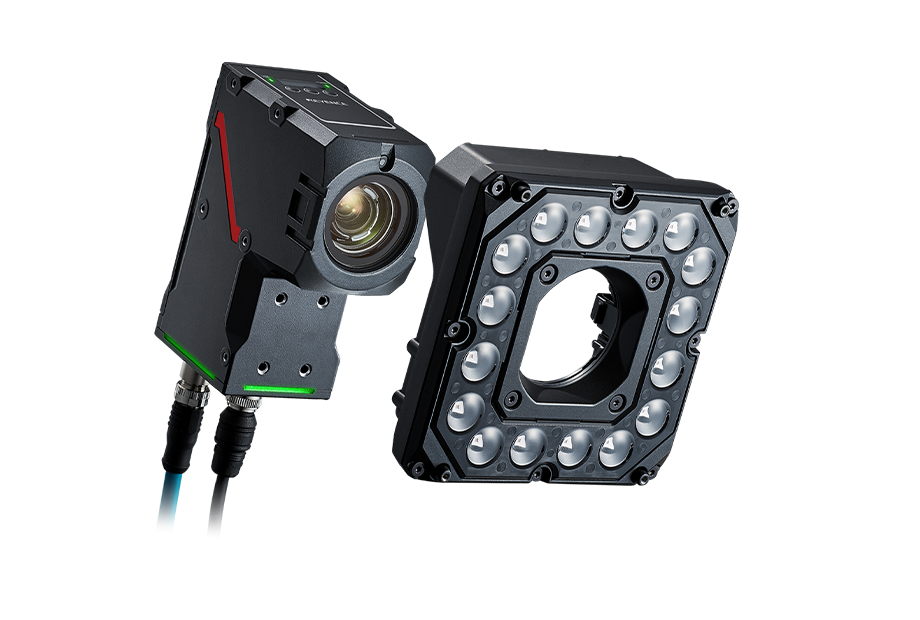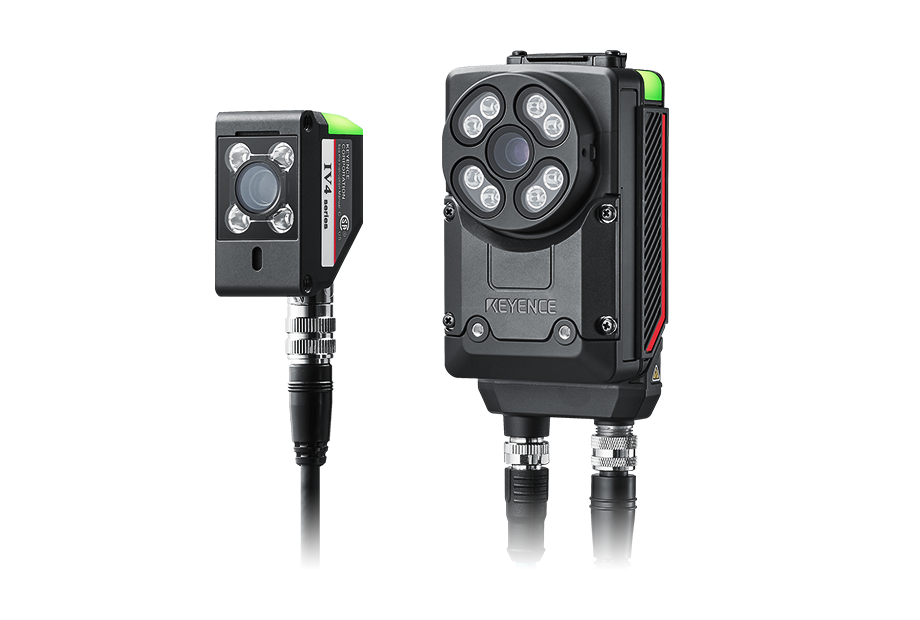Machine Vision
Inspect, identify, and guide parts using our broad range of vision products.
Lineup

Vision Systems
KEYENCE vision system offerings range from all-in-one smart cameras to modular high-speed controllers. Inspection tools ranging from AI functions to rule-based tools provide solutions for various applications.

Vision Sensors
Vision sensors featuring built-in Artificial Intelligence for stable results.
Frequently Asked Questions About Machine Vision
The manufacturing and automotive industries are best known for relying on machine vision products for different tasks, including control, inspection, and process monitoring. In addition to the aforementioned industries, machine vision systems are extensively employed in various sectors, including electronics manufacturing, pharmaceuticals, food and beverage, logistics and packaging, and security and surveillance.
Machine vision technology provides image-based automation to control various production processes, including automatic inspection, analysis, process control, and robot guidance, performed in various applications.
Machine vision systems rely on a variety of inputs, such as 3D cameras, laser sensors, LIDAR, ultrasonic sensors, and thermal imaging, to derive the necessary information during a particular operation. The machine vision software captures and interprets this information, which performs subsequent operations based on the interpreted information while storing data for later inspection and subsequent processing if necessary.
Depending on the type of technology used, the type of sensor, as well as the overall specs of the system, machine vision systems can be categorized into four basic types: 1D machine vision systems, 2D machine vision systems, 3D machine vision systems, and spectral imaging and color vision systems.
These systems can also perform various tasks, such as object recognition scene analysis, autonomous navigation, data collection, and many more, usually related to a particular manufacturing process.
Machine vision solutions provide numerous benefits regardless of the application, thanks to their overall accuracy, precision, and reliability—they can see what’s invisible to the human eye. Since they’re more versatile and less susceptible to human error, these systems are often used to speed up and optimize the manufacturing process.
This results in a better-quality product, increased output, and optimized resource use. These systems also enhance quality control, improve worker safety, comply with many safety standards, both in the context of staff safety and product safety and reduce overall production costs.
Machine vision system prices vary based on application requirements. KEYENCE offers diverse products at different price points to cater to various needs. To determine the cost for your specific project, it is recommended that you contact KEYENCE directly.
Machine vision applications typically utilize diverse types of cameras, each possessing distinct features and capabilities. These encompass high-resolution, high-speed, standard, and compact cameras. Each type serves various purposes and applications, providing a wide array of options to accommodate specific needs.
Machine vision software is a crucial component of machine vision systems. While the actual data capture is performed by the systems’ hardware components, which include sensors and other transducers, the actual processing of said data is usually performed by the software.
This software employs a diverse range of algorithms, encompassing both conventional image processing techniques and cutting-edge technologies such as artificial intelligence and machine learning. Its primary function is to process the input signal received from cameras.
The software can identify and classify various objects within the captured image, make various decisions, and trigger adequate, pre-set actions in robotic systems for automation and other applications. This includes measuring dimensions, counting items, detecting defects, sorting products, or simply guiding the overall production line and assembly process.
Vision sensors operate by analyzing images acquired through a camera. The sensor head comprises a camera, lighting, and controller seamlessly integrated into a compact unit. The controller then employs pre-programmed algorithms to process the images and compare them with a reference image or predefined criteria. This comparison helps identify the target's presence or detect shape and color disparities.
Machine Vision Resources
Applications of industrial machine vision
Learn about the diverse applications of industrial machine vision applications in quality control, robotics and manufacturing.

